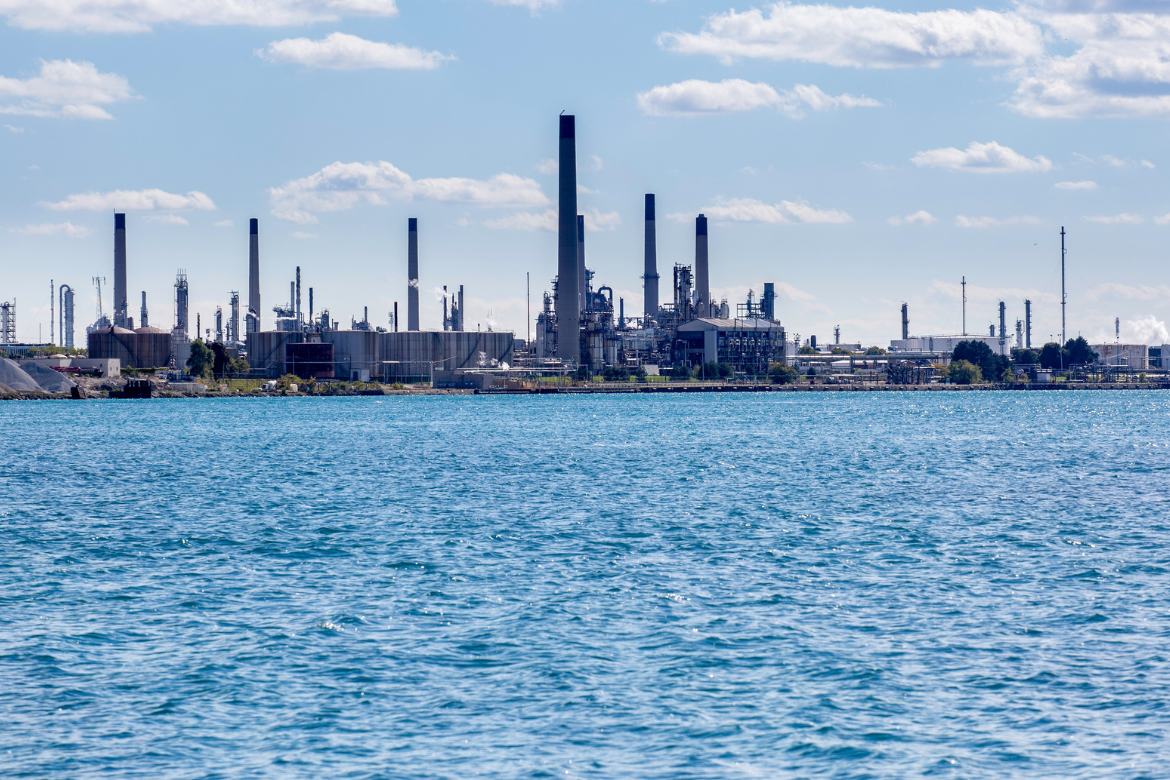Ineos Styrolution, the plastics plant mired in controversy since high levels of benzene pollution were reported there earlier this year, is now set to close by 2026.
The company bills itself as the world’s leading supplier of styrenic materials used in many plastic products, including packaging and toys.
In announcing its plan to close, Ineos cited economic realities, investments made for the safety and reliability of the site and additional costs required in the near future. The plant employs approximately 80 workers and a large number of contractors, according to the company.
“Such investment would be economically impractical given today’s challenging industry environment,” Steve Harrington, Ineos Styrolution’s CEO, said in a press release.
Aamjiwnaang First Nation criticized the plant in April while negotiations continued in Ottawa for a global plastics treaty. The complaints turned international eyes to Sarnia, Ontario, which is home to Canada’s Chemical Valley. The Ineos plant sits across the street from Aamjiwnaang First Nation’s education centre and other community facilities.
During press conferences and a meeting with Environment Minister Steven Guilbeault, Aamjiwnaang’s political leadership slammed the plant and the industrial petrochemical region for causing hospitalizations and high rates of respiratory diseases, miscarriages and cancer.
Weeks later, Ineos Styrolution was the reason for a new two-year federal interim order on benzene pollution in the Sarnia area. To ensure Ineos “cleans up their act,” Ottawa issued the ruling following four emergency orders in the last four years, Guilbeault said in a statement to Canada’s National Observer.
“We took this step to protect the health and safety of those communities directly impacted and to align with provincial action to ensure situations like this don’t happen again,” the statement continued. “To poison a community, that’s unacceptable.”
Two weeks ago, Ontario released new regulations specifically for Ineos. Those new benzene regulations — created by the province – still allow Ineos to emit levels of the toxin that are 10 times higher than the provincial standard.
Ontario’s air pollution regulations under Reg. 419/05 cap benzene emissions in most plants in the province, including Sarnia, at 0.45 micrograms per cubic metre (µg/m3) annually. Meanwhile, Ontario’s newest regulations, explicitly crafted for Ineos, cap the plant’s benzene emissions at 4.5 micrograms µg/m3 over a 365-day period.
The new provincial regulations governing Ineos also require the company to meet limits on benzene concentrations, notify the ministry and Aamjiwnaang if the facility exceeds those limits, identify and report on causes of infractions, install enhanced monitoring systems and share real-time monitoring data on a publicly accessible website.
Ineos has recently spent $50 million to maintain and modernize the Sarnia plant, reducing emissions below 580 µg/m3 over an hour and 320 µg/m3 every 24 hours, the company told Canada’s National Observer in a statement at the time.
“These sudden regulatory changes are concerning and without due process,” the previous statement continued. “Further, these latest orders require our site to conduct non-routine transfers and cleanings that will force us to exceed these newly established limits.”
Ontario is aware of the plant’s closure announcement, which the company attributes to long-term factors outside of the current situation, Gary Wheeler, spokesperson for Ontario’s Ministry of the Environment, Conservation and Parks, said in a statement to Canada’s National Observer.
“The ministry will continue to prioritize health and safety as the company determines their next steps,” Wheeler added.
Canada’s National Observer has contacted Aamjiwnaang First Nation and Ineos Styrolution for comment but did not receive one in time for publication.
Meanwhile, the environmental group Ecojustice celebrated the news as an “important first step in addressing the legacy of environmental racism,” Elaine MacDonald, the group’s community program director, wrote in a statement.
“Chemical Valley is home to a significant proportion of Canada’s petrochemical plants, and Aamjiwnaang First Nation has borne a disproportionate level of harm from this industry,” MacDonald added.
By Matteo Cimellaro, Local Journalism Initiative Reporter
— with files from the Canadian Press





